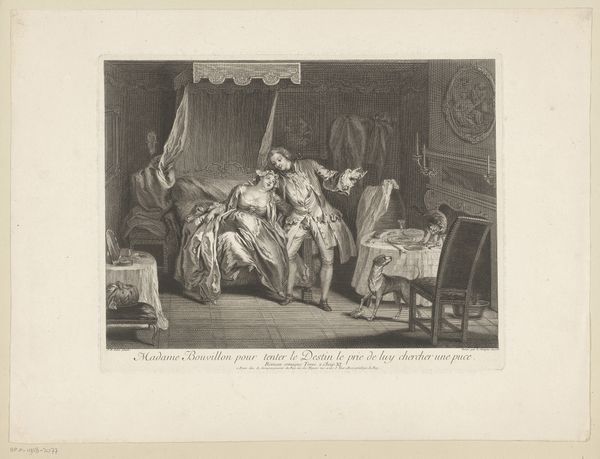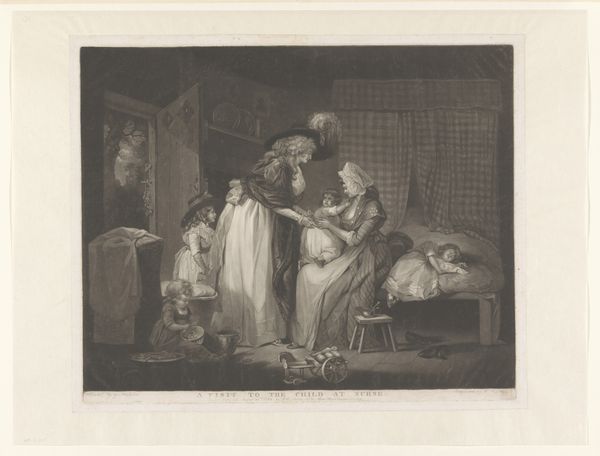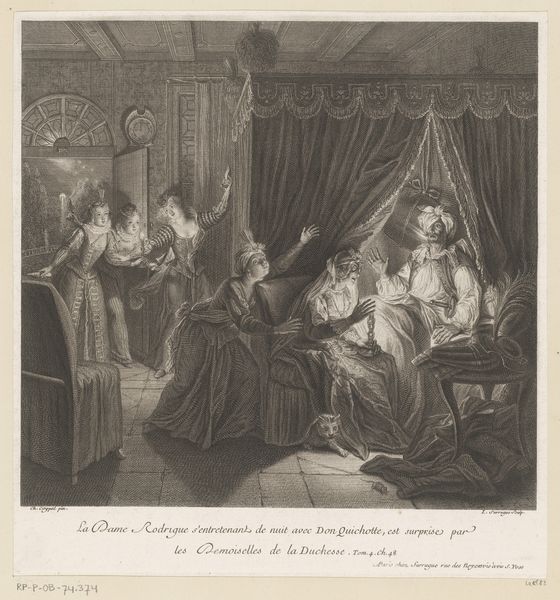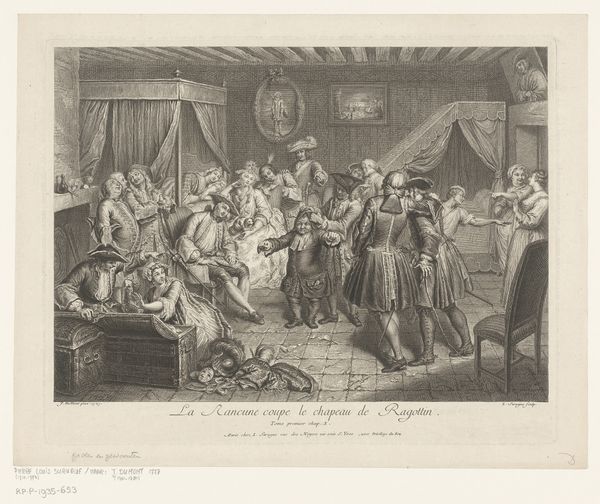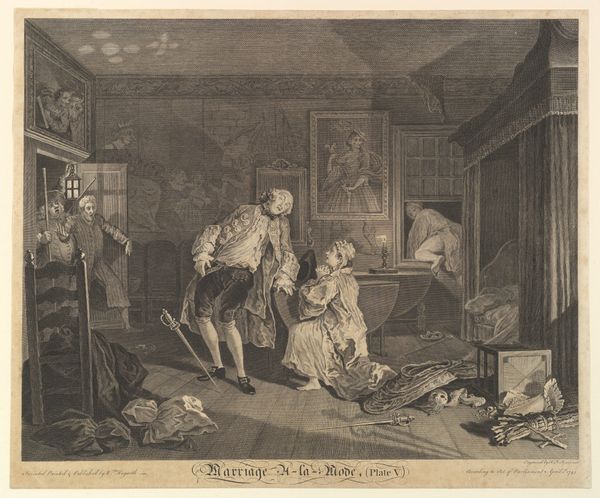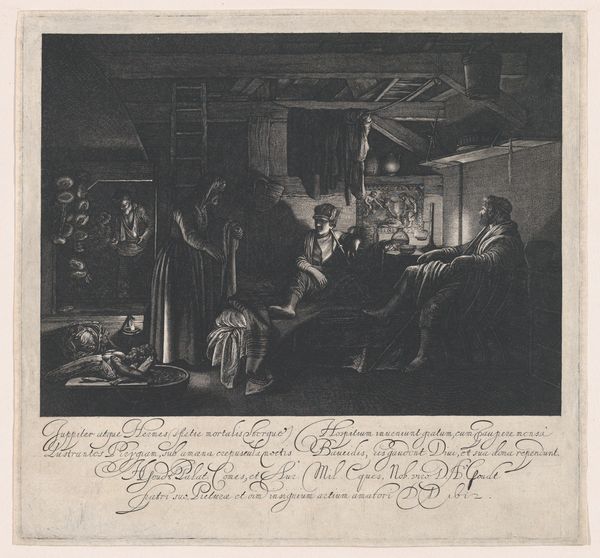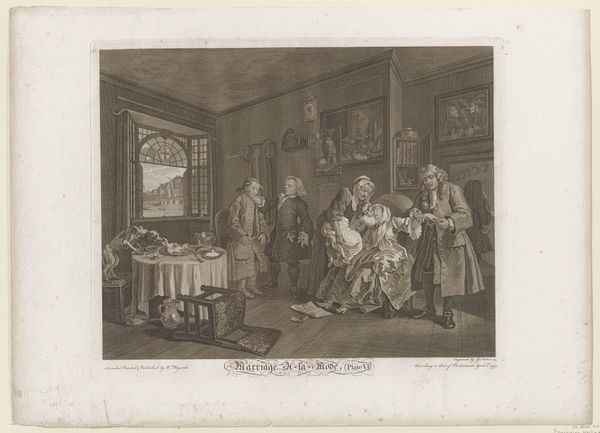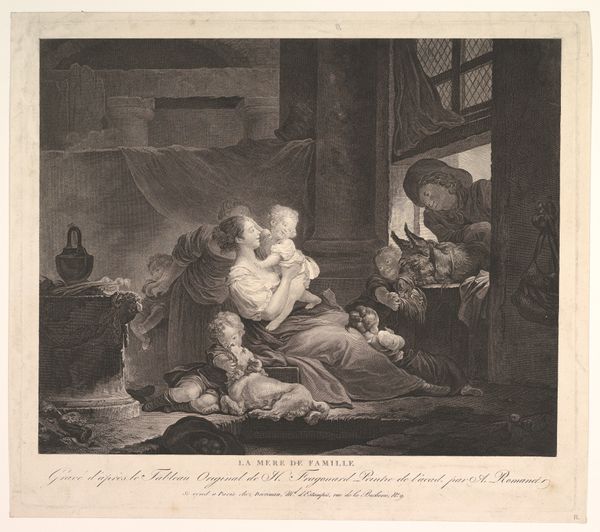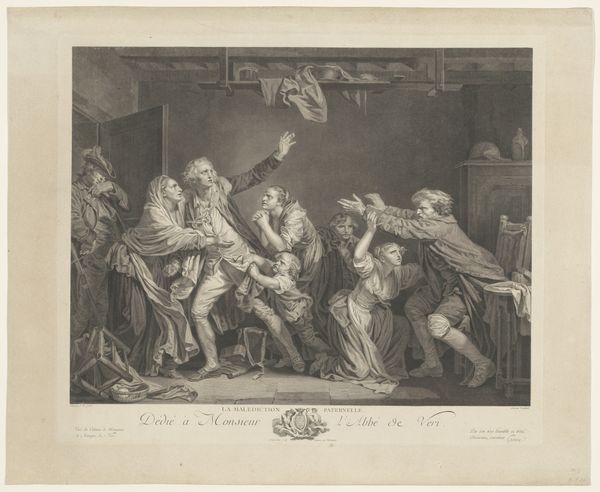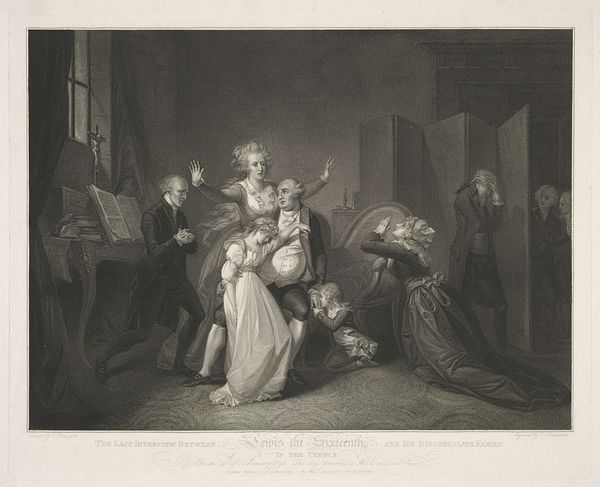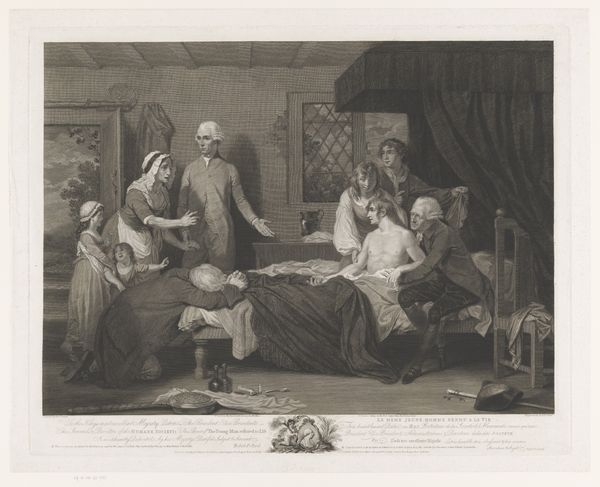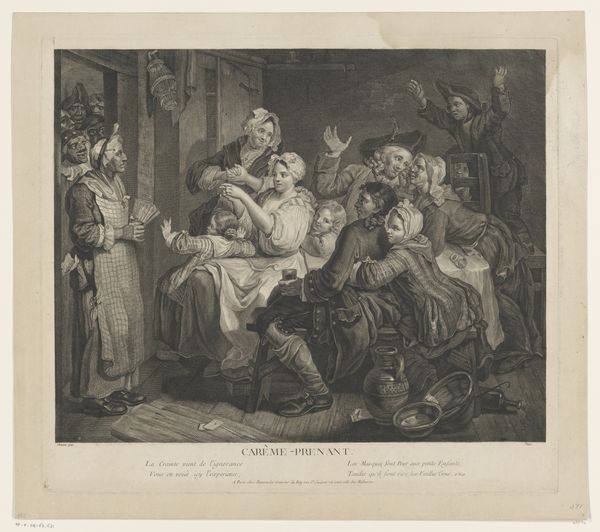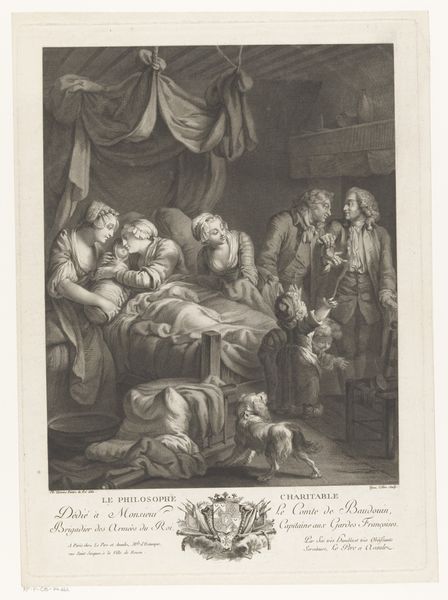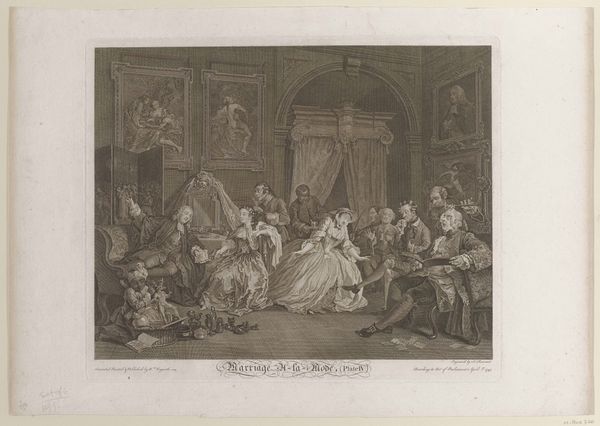
Dimensions: height 416 mm, width 478 mm
Copyright: Rijks Museum: Open Domain
Editor: We're looking at "Driekoningen viering," or "The Feast of the Three Kings," an engraving by Jérôme Danzel from around 1770. It feels like a frozen moment, capturing this lively, yet staged, interior scene. The composition leads your eye all over the place. What aspects of the image strike you? Curator: Notice how the artist organizes the space. The arrangement of figures, clustered yet distinct, contributes to the rhythm. The light, emanating from a single source, is not merely illuminating; it's structuring the scene, creating dramatic contrasts between light and shadow, shaping volume and form. It calls attention to the different areas, no? Editor: Yes, it does. The darker area on the left almost serves as a repoussoir, driving your focus towards the central figures around the table. What's your interpretation of the table itself? Curator: Precisely, and the table itself acts as a compositional anchor, dividing the scene horizontally and providing a stage for the depicted event. Consider the balance created by the distribution of figures and objects—how emptiness and fullness complement each other, generating a visually compelling and dynamic composition. There’s even an architectural structure hinted at the back. Editor: I hadn't fully registered that balance until you pointed it out. I see it’s more than just documenting an event. Curator: Precisely. Danzel demonstrates skill in organizing shapes to convey movement and dynamism within the confined space. Every mark seems deliberate, reinforcing the thematic and aesthetic intentions behind the engraving. Editor: Thank you. Now when I view it, it feels almost geometric. It offers a new experience of what at first felt like an everyday, familiar event.
Comments
No comments
Be the first to comment and join the conversation on the ultimate creative platform.
